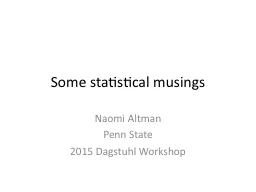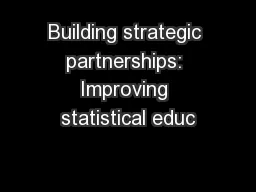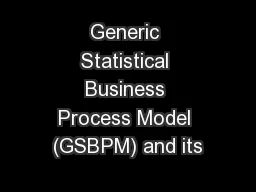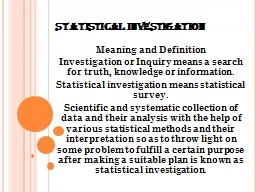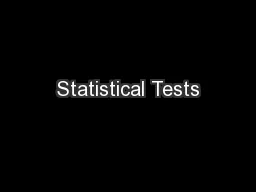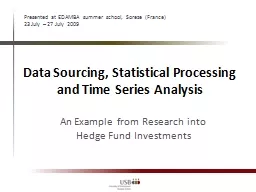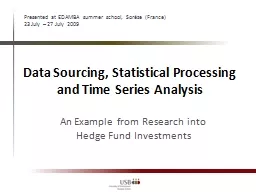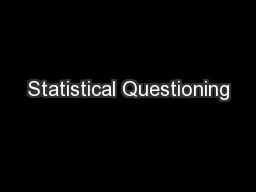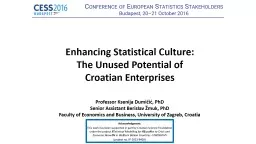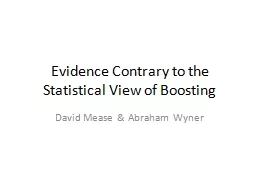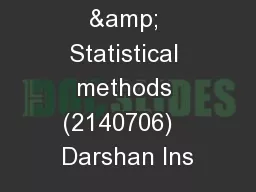PPT-Some statistical musings
Author : marina-yarberry | Published Date : 2017-04-07
Naomi Altman Penn State 2015 Dagstuhl Workshop Some topics that might be interesting Feature matching across samples and platforms Preprocessing number of features
Presentation Embed Code
Download Presentation
Download Presentation The PPT/PDF document "Some statistical musings" is the property of its rightful owner. Permission is granted to download and print the materials on this website for personal, non-commercial use only, and to display it on your personal computer provided you do not modify the materials and that you retain all copyright notices contained in the materials. By downloading content from our website, you accept the terms of this agreement.
Some statistical musings: Transcript
Download Rules Of Document
"Some statistical musings"The content belongs to its owner. You may download and print it for personal use, without modification, and keep all copyright notices. By downloading, you agree to these terms.
Related Documents

